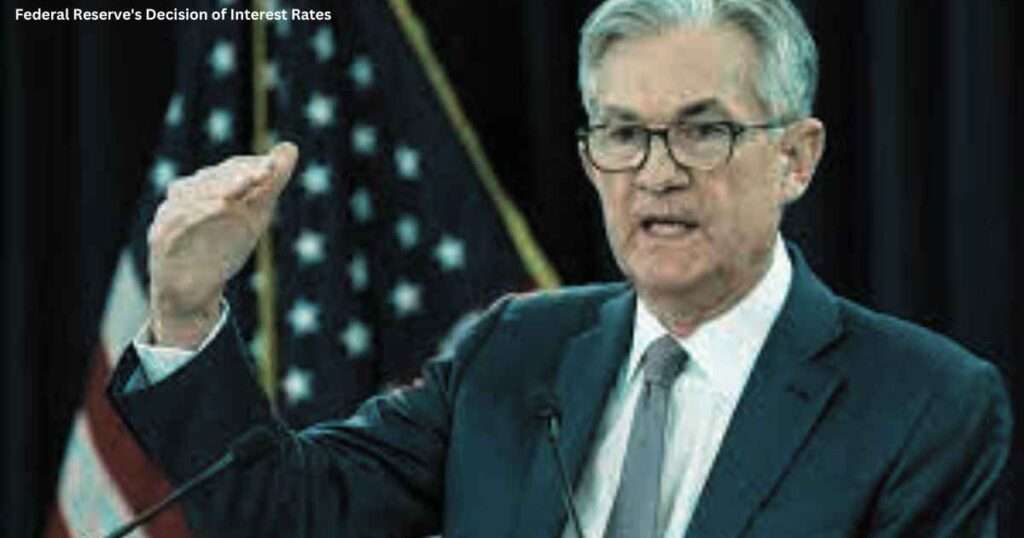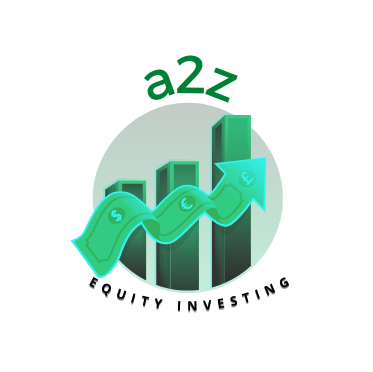Introduction
Federal Reserve: Benchmark borrowing rates have reached their highest level in more than 22 years as a result of the Federal Reserve’s decision to approve a highly expected interest rate increase. We shall examine the specifics of this momentous action and its effects on the economy and markets in this post.

The Federal Reserve’s Decision: An Expected Increase in Interest Rates
The Federal Open Market Committee increased its funds rate by a quarter percentage point, as generally anticipated, raising the target range to 5.25%-5.5%. Since the tightening trend started in March 2022, the FOMC has raised rates 11 times. The benchmark rate is at its highest level since early 2001 near the middle of the new goal range.
Effects of Rate Increase
The rate rise was already included into financial markets, but there were questions about whether this would be the last increase for some time. Markets presently show a larger chance of no additional changes in 2023 despite officials having signaled the potential of two rate rises this year.
Jerome Powell, the chairman of the Federal Reserve, stressed the bank’s commitment to making data-driven decisions on a “meeting-by-meeting” basis at a press conference. The Fed’s 2% inflation objective must still be attained, he said, while acknowledging that inflation has eased significantly since the middle of the previous year.
Jerome Powell, the Chairman’s Perspective
At the Fed’s next meeting in September, Chairman Powell’s comments allowed space for both future rate rises and the prospect of leaving rates unchanged. He suggested that the Fed may take another look at boosting money at the September meeting if the data supports it.
Powell emphasized the significance of evaluating the incoming data and its implications for inflation and economic growth. This data-driven strategy is consistent with the opinions recently shared in public by several central bank executives.
Expert Opinions on the Rate Increase
Experts and economists have been attentively observing how rate rises are affecting the state of the economy. Economic growth has been mostly robust despite warnings of a recession; second-quarter GDP is tracking at a 2.4% annualized pace. Nonfarm payrolls have also increased, while the unemployment rate has stayed constant at 3.6%.
According to Joe Brusuelas, chief economist for the United States at RSM, the economy needs time to recover from previous rate rises. He contends that the underlying rates of inflation, job growth, and general economic circumstances are fostering conditions in which the Fed may decide to terminate its program of rate hikes.
The Historical Tightening Process of the Fed
The Federal Reserve’s vigorous rate-hike campaign right now is notable for its resemblance to the early 1980s, when the central bank was likewise struggling with rising inflation and an unsteady economy. The Federal Reserve still wants to achieve its 2% inflation objective, but current inflation patterns indicate that prices are still over this goal.
Debt from consumers and inflation
The consumer price index increased by 3% on a year-over-year basis in June, according to recent inflation figures, which is good. The Fed’s preferred metric, the personal consumption expenditures price index, increased 3.8% on a headline basis and 4.6% on a core basis in May, but the CPI is only growing at a pace of 4.8% when food and energy are excluded.
Mortgages, credit cards, and personal loans are all forms of consumer debt that are directly impacted by the fed funds rate. Changes in borrowing costs and interest rates may affect consumers as a result of the Fed’s aggressive approach to rate rises.
Economic Survival Despite Rate Increases
Despite the rate increases, employment has remained steady and economic growth has been unexpectedly durable. Despite widespread predictions of a probable recession from experts, Chairman Powell is confident that the Fed’s conservative policy will prevent major job losses.
Quantitative Tightening and the Balance Sheet
The committee has stated its aim to keep lowering the bond holdings on its balance sheet in addition to the rate rise. The balance sheet has decreased from its height of $9 trillion to $8.32 trillion, and the Fed is letting maturing bond revenues to roll off up to $95 billion a month.
The Federal Reserve’s decision to increase interest rates was eagerly awaited and represents an important turning point in the continuing fight against inflation. Markets and investors may feel secure in Chairman Jerome Powell’s data-driven strategy and dedication to economic evaluation. The future, nevertheless, is still unclear as analysts continue to pay careful attention to inflation and economic growth prospects.
I cannot access real-time data since I am an AI language model. As per your needs, kindly confirm the correctness and applicability of the material in this article.
What is the Fed Funds Rate’s current target range?
The fed funds rate’s current target range is 5.25% to 5.5%.
How many times have interest rates increased as a result of the tightening process?
Since the Federal Reserve started the tightening process in March 2022, rates have gone up 11 times.
What rate increases in the future are economists predicting?
Markets presently show a larger chance of no additional changes in 2023 despite officials having signaled the potential of two rate rises this year.
How did the economy react to the rate increases?
Despite forecasts for a recession, the economy has proven resilient, with nonfarm payrolls growing and second-quarter GDP running at a 2.4% annualized pace.
What method does the Fed use to manage its balance sheet?
The Federal Reserve is continuing to reduce the amount of bonds it has on its balance sheet and is allowing maturing bond revenues to roll off.
Open Your Demat Account with Discount Brokers:
ZERODHA 1) : https://zerodha.com/open-account?c=EJ4366
Angelone 2) : https://tinyurl.com/2gloc3g6 or Upstox
3): https://link.upstox.com/9w4tNo1rK8au7VK47








